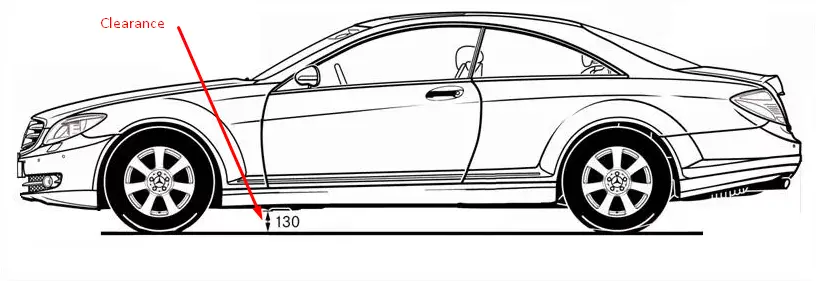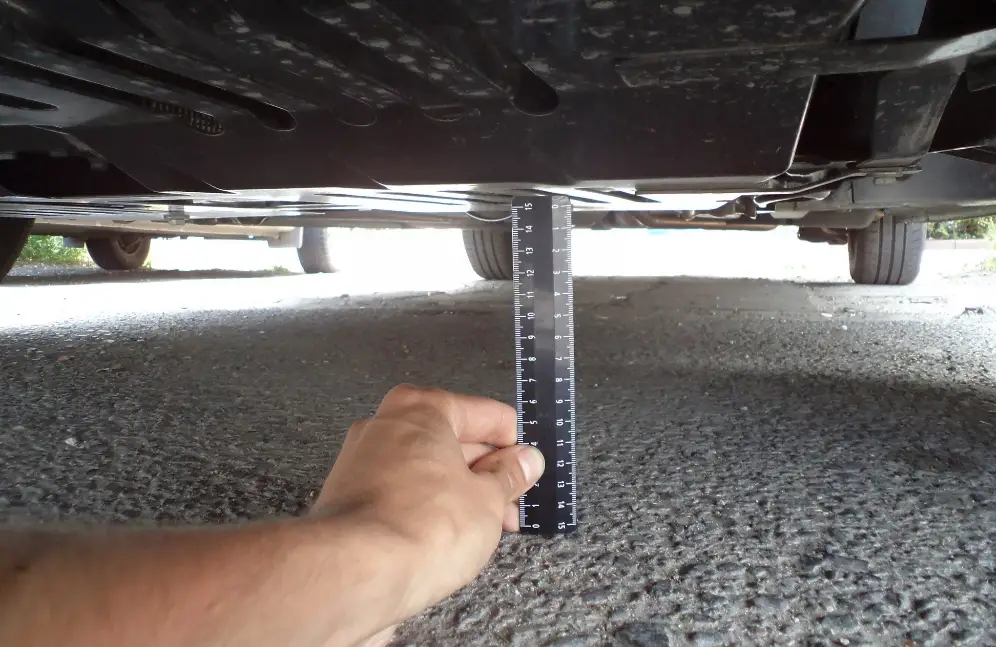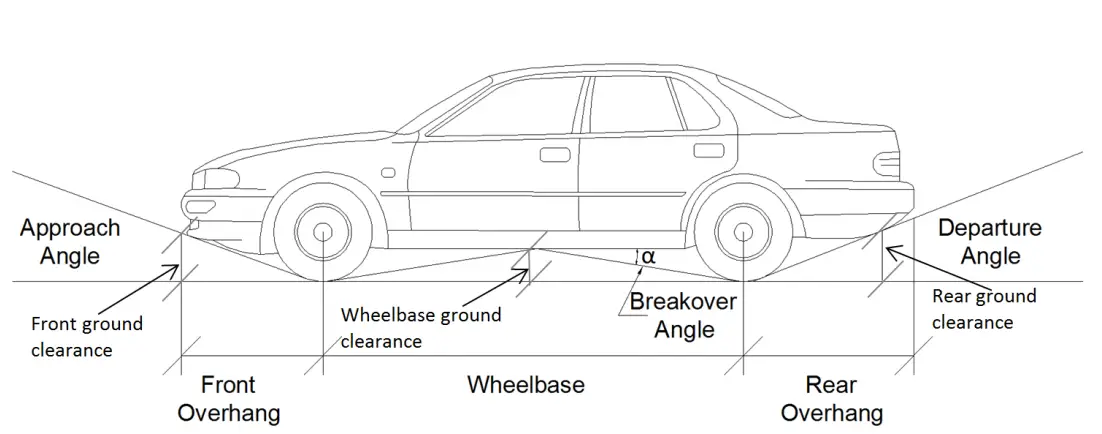Vehicle’s ground clearance is among the cornerstone dimensions when it comes to comparing cars. It affects many aspects of the drivers’ life: load capacity, road comfort, safety, etc. Automakers constantly play with the numbers in an effort to find the right balance in terms of ride height.
What is actually a ground clearance?
In a nutshell, this is the distance between the lowermost point of the car and the road surface in an unladen condition. This is the reason why the actual measurement might slightly differ from the official specs.

Essentially, all the debate in the automotive community boils down to the following two controversies.
- Higher road clearance lets you feel more comfortable on the bumpy or steep terrain roads, it also helps to get off the mud and snow.
- Lower road clearance improves handling and stability on the highway, makes the steering more responsive to your reflexes behind the wheel.
Automakers constantly play with the numbers in an effort to find the right balance in terms of ride height.
Unfortunately, no car can combine them both and it is always a choice between the body style. And ground clearance comparison of cars gets really hot when it comes to assessing a similar category of autos. That is when every inch gets counted.
Passenger cars minimum vehicle ground clearances
| Driveway Vertical scenario geometry | Min. Front clearance for vertical geometry (m) | Min. WB clearance for vertical geometry (m) | Min. rear clearance for vertical geometry (m) |
|---|---|---|---|
| Uphill model | 0.13 | 0.09 | 0.14 |
| Downhill model | 0.07 | 0.11 | 0.08 |
The above table shows the results for the minimum ground clearance thresholds identified for the passenger vehicles based on the minimum desirable grades from the GDGCR.
Problem is specs you find in the manufacturers’ manuals are defined for vehicles in an unloaded condition, meaning no cargo or passengers are inside. Our editorial team is focused on verifying the ground clearance measurements in different conditions, like with and without cargo and passengers.

Check out our reviews for popular models providing photos with the ruler measuring the real distance from the ground to the lowest point underneath your vehicle as we want to provide undoubted proof for our readers.
Yeah, we are crazy like that!
On top of that, every individual review is complemented with a useful ground clearance simulator that visualizes the potential trajectory of the vehicle while going down a steep descent. This is a useful interactive online test-drive with the tool allowing to reproduce what will happen to your bumper without a chance of crashing it.
What do we love as much as rating cars against each other? Probably, making useful lists and collections like highest ground clearance SUVs, sedans, hatchbacks, minivans, trucks, sports cars, etc.
Our charts include:
- sports cars with good ground clearance
- small cars with good ground clearance
- highest ground clearance SUV
- lowest ground clearance car
Interesting feature!
Cars that sit high off the ground (apparently SUVs) are very popular among the women and shorter people as they provide a better observation from inside the cabin.
How it affects driving?
Ride height directly impacts the driving as it defines the center of gravity. Vehicles with high ground clearance, like SUVs and trucks, are more inclined to roll over while sharp-cornering should they fail to slow down before it is too late.

On the contrary, low clearance puts you at risk of scratching the underbelly of the vehicle when parking or you can simply get stuck in mud or sand.
Things to consider: Wheelbase & Suspension
You simply cannot ignore the importance of the wheelbase and suspension, otherwise, it is very easy to get the wrong impression when calculating the geometry of the car.
Wheelbase dimension measures the distance between the centers of the front and rear wheels. Two vehicles with equal ground clearance but individual wheelbase have a different break over angle.
This term is coined to calculate the maximum possible angle that a vehicle can overcome without touching its surface other than wheels.
Not clear, right? To put it simply.
Remember the funny accident when the President’s Obama limo stuck on a ramp? This is what can happen to low-riding cars with extended wheel-base.
How to increase the ground clearance of the vehicle?
1) Get bigger tires
The most apparent answer is to change the car. Jokes aside, you can raise the ride height a little bit by using a custom high-profile tire or upsized rims. At this point, we recommend checking out the maximum possible tire size and wheel offset to avoid rubbing against the fenders. The most important trick here is to find out if your wheel well can accommodate bigger tires.
2) Use spacers under coil springs
Placing the rubber pads under the coil springs will make your vehicle sit higher above the road but will also change the angle of the lower arms and links. Consequently, this method will make the driving stiffer.
To put ground clearance on steroids, professional tuners experiment with suspension kits, altering the dampers and strut.
3) Re-cambering the springs
Vehicles equipped with the leaf spring can get an improved ground clearance by re-cambering the springs. It simply boils down to molding the leaf which changes the sharp angle. Speaking of drawbacks, the ride gets “jumpy”.
On the contrary, a slammed stance is a popular subculture in the United States which means lowering the vehicle’s ground clearance by cutting the small increments of the coils.
It should be noted factory ground clearance was designed with many factors in mind to give the best possible stability on road. So changing this dimension might compromise the safety. Our guidelines are for informational purposes and we strongly advise working with professional mechanics.
Proud Partners & Collabs










